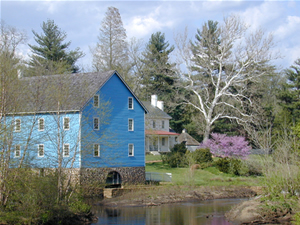Road to Monmouth

Summer, 1778
“If we suffer the enemy to pass through the Jerseys without attempting anything upon them, I think we shall ever regret it… People expect something from us & our strength demands it.”
– Nathanael Greene to George Washington
The British enjoyed victories at Brandywine and Germantown outside Philadelphia in 1777. But then, a British defeat at Saratoga, New York in October led the French to enter the war on the side of the Americans. Faced with the threat of the French fleet, the British decide to evacuate Philadelphia and return their army north to New York City, with the American army shadowing them.
The two armies crossed paths in the fields outside Monmouth Courthouse (today’s Freehold). In the Battle of Monmouth that followed, the newly-trained Continental Army fought the British to a standstill in what’s acknowledged to be the largest artillery duel, and the hottest and longest single battle, of the American Revolution. Washington’s troops proved they could stand up to what was thought to be the world’s best fighting force.
The Road to Monmouth follows two routes of march that pass through beautiful countryside and charming historic legacy communities. The British path crossed the Delaware River at Philadelphia to Gloucester City and Cooper’s Ferry (today’s Camden) through Haddonfield, Mount Holly, Columbus, Mansfield, Crosswicks and Allentown. Washington’s army paralleled the British movement, crossing the Delaware at Lambertville and passing through Rockville, Hopewell, Kingston, and Cranbury toward Englishtown.
The two armies met at the Battle of Monmouth, just west of Freehold.












